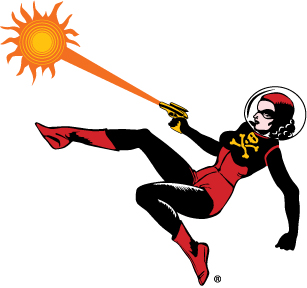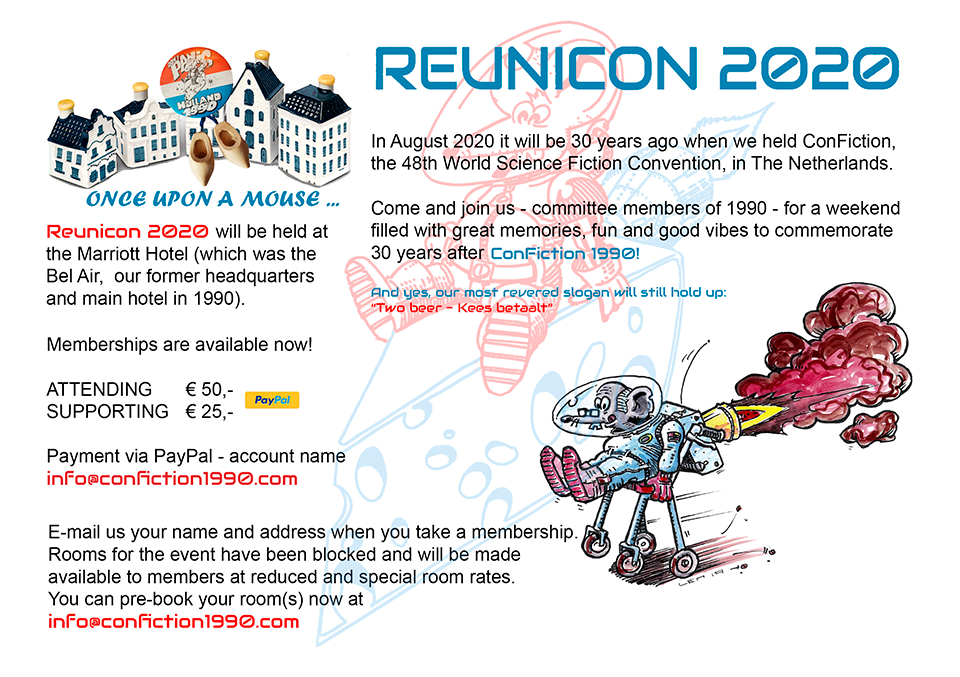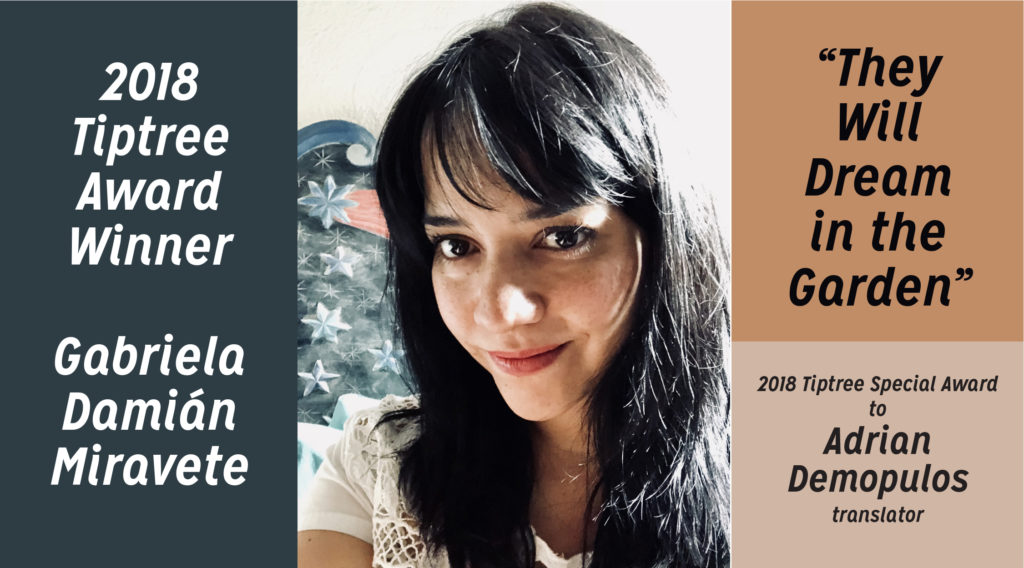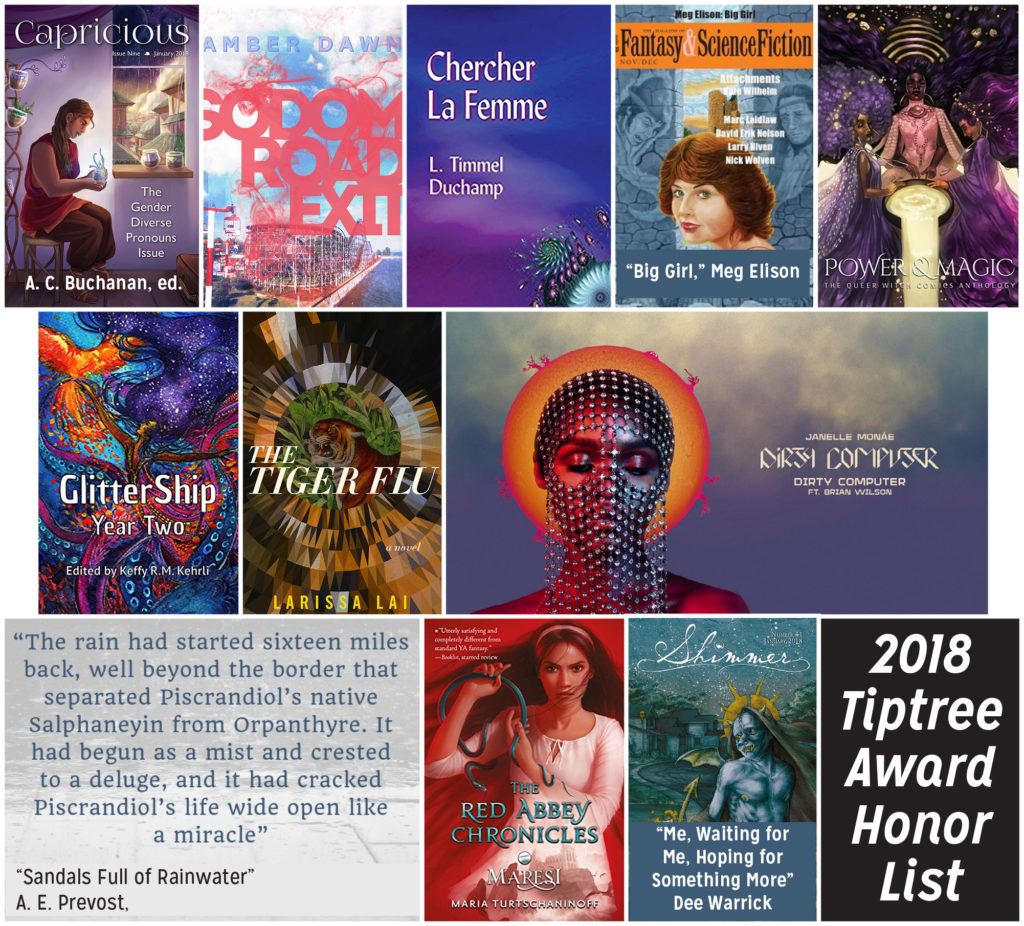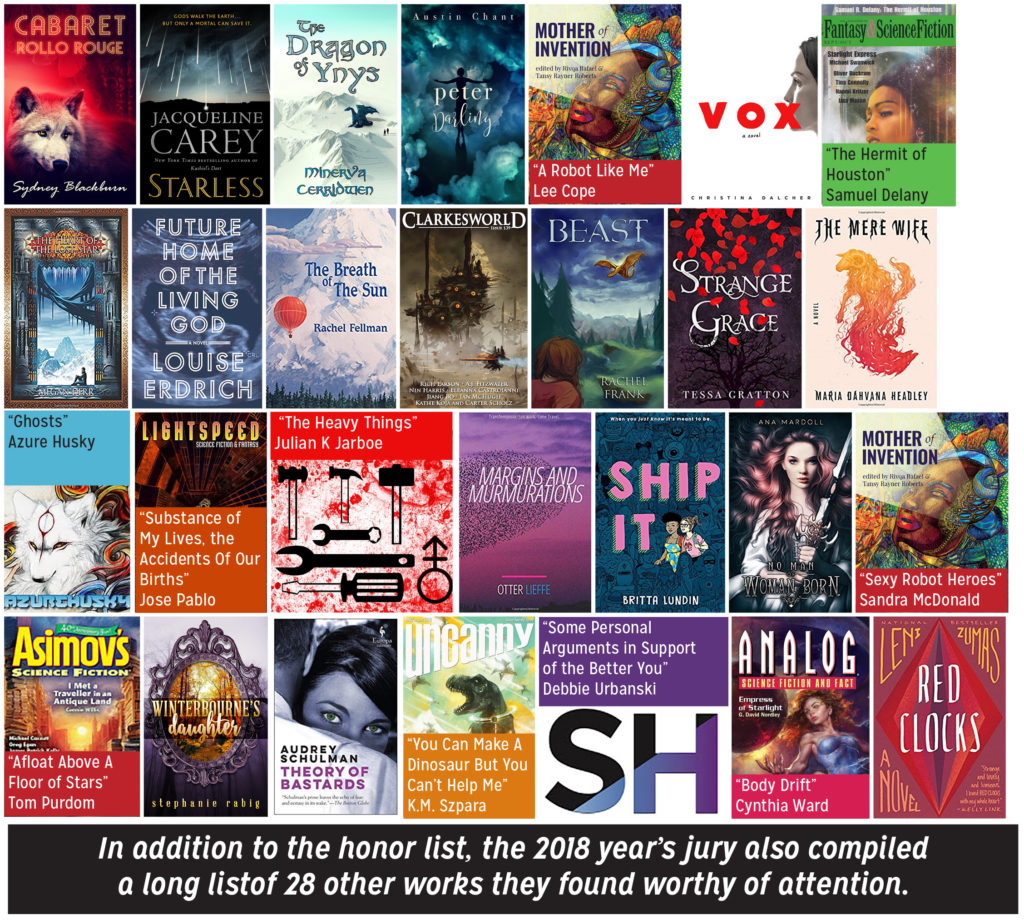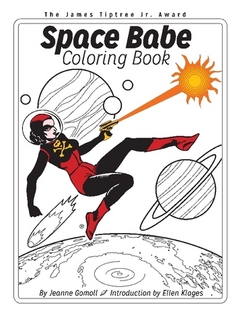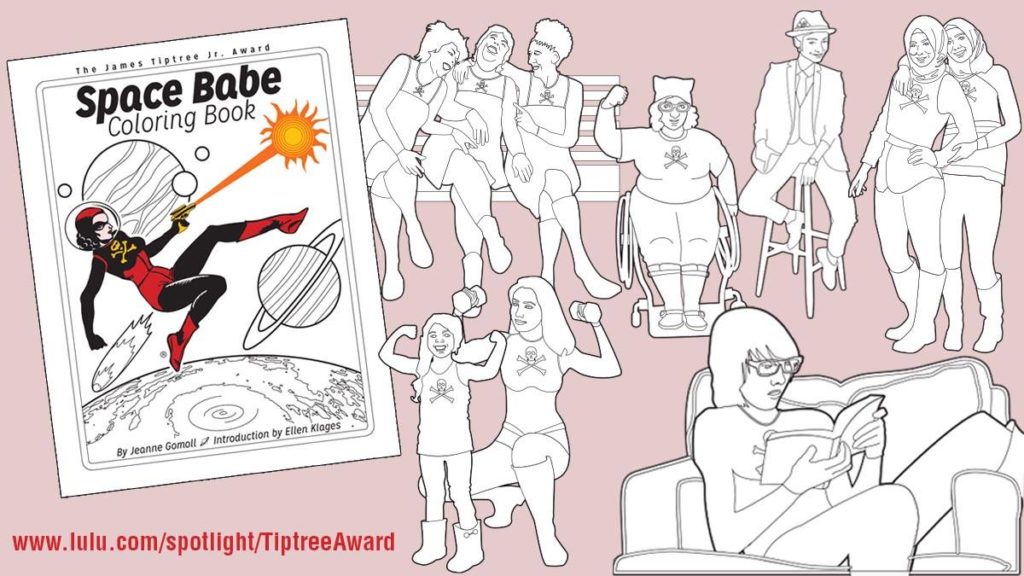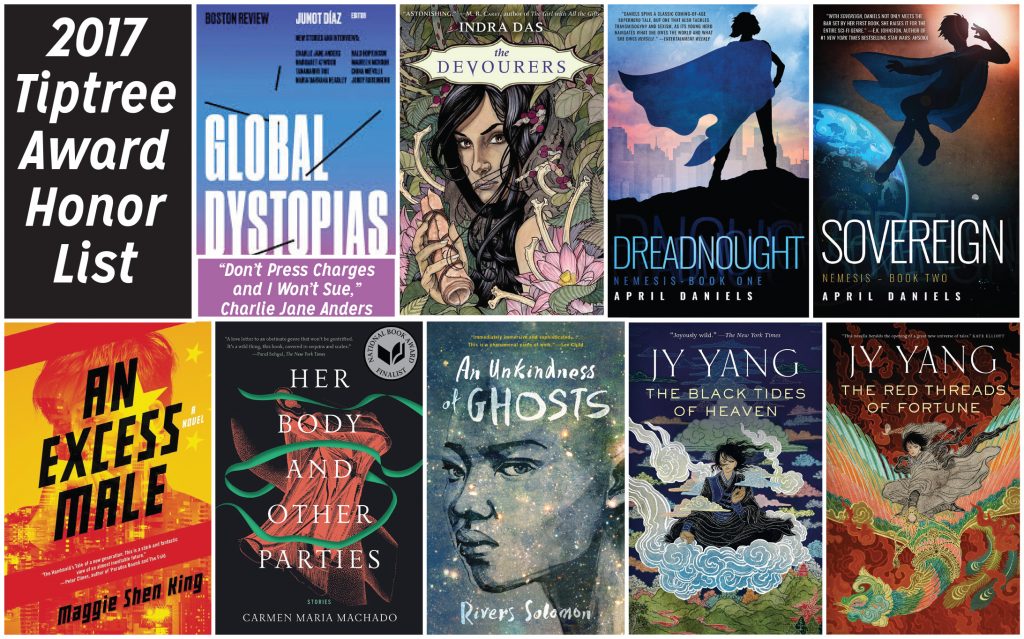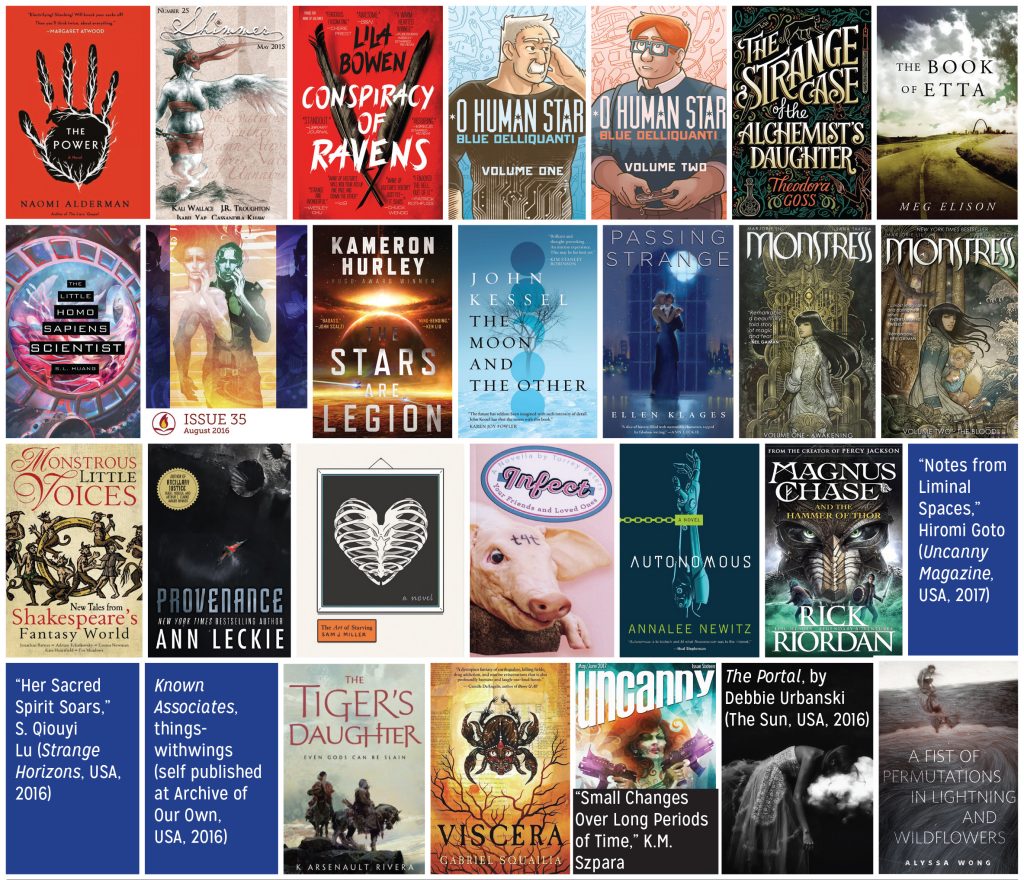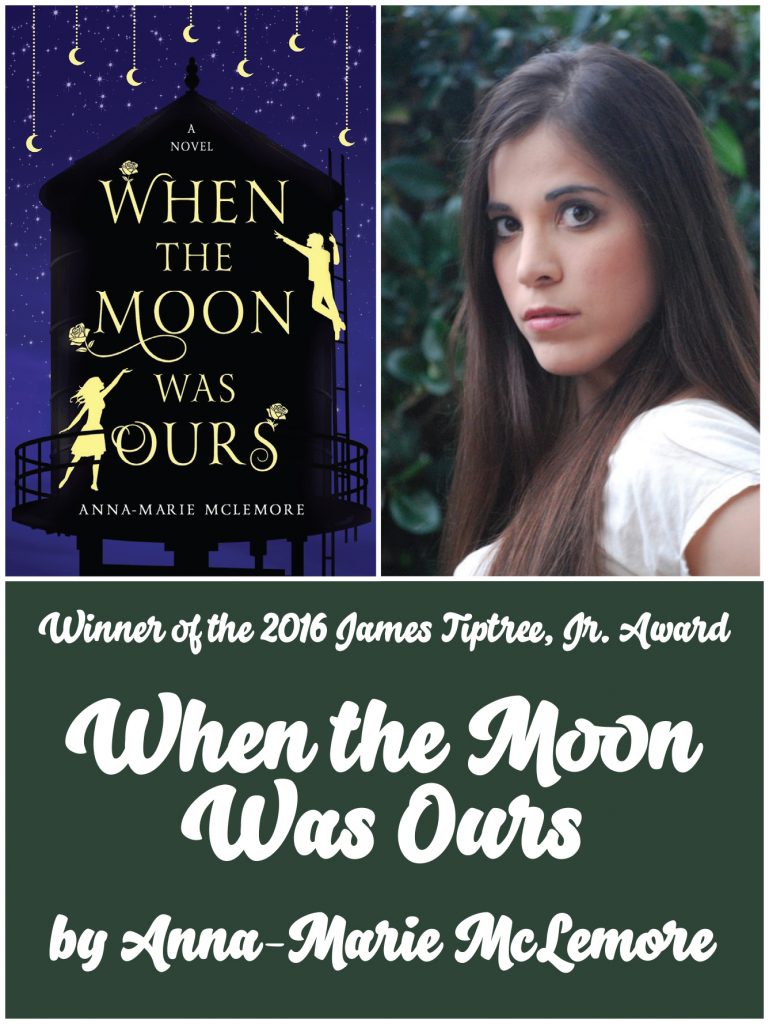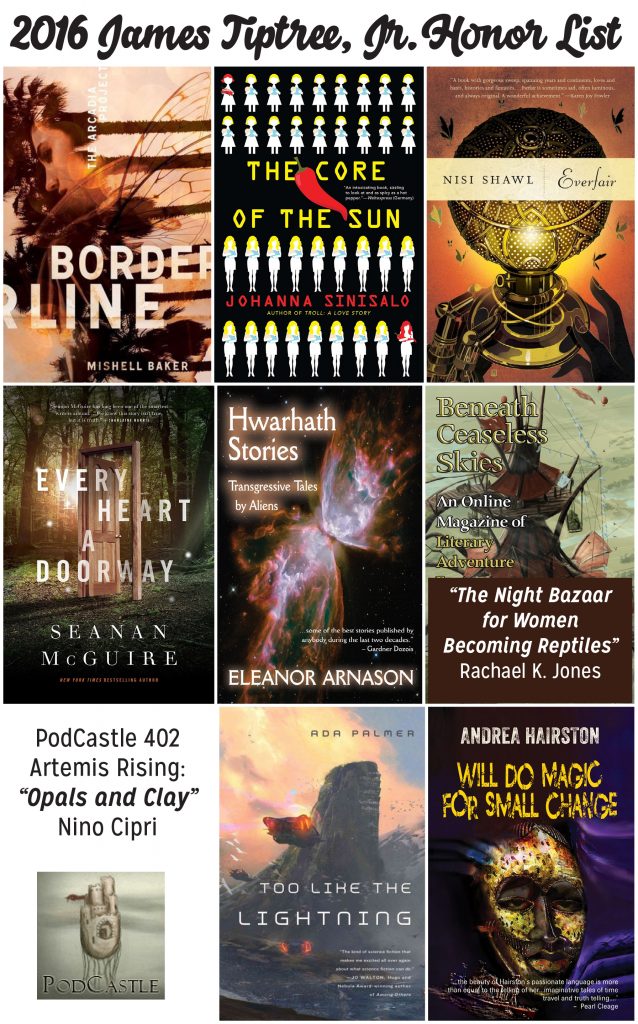
(1) BACK IN THE SHED. The tower for Artemis is being hauled under cover: “Kennedy Space Center bracing for Hurricane Dorian”.
NASA civil servants and contractors at the Kennedy Space Center in Florida are bracing for high winds and rain from Hurricane Dorian. Ahead of the storm, they are securing rocket stages, spacecraft assembly areas and even hauling a 6.7-million-pound mobile launch tower, designed for the huge rocket being built for the Artemis moon program, back to the cavernous Vehicle Assembly Building for safekeeping.
The 355-foot-tall gantry structure, carried atop a squat Apollo-era crawler-transporter, is scheduled to begin the 4.2-mile trip from launch complex 39B back to the protection of the VAB at dawn Friday — a journey that’s expected to take more than eight hours to complete.
(2) DUBLIN UP. Two more Worldcon write-ups.
Noelle Ameijenda, in “The Fantastic comes Home”, tells how she juggled attending and working the con:
Thursday (15th August) was the first full day – I spent a while in the morning doing some running for the Chair’s office – up and down the elevator with bits and pieces – highly important bits and pieces, of course! Then I got to attend two brilliant panels – ‘Invasions and the Irish Imagination’ and ‘When scientists write science fiction’ – before a quick bite for lunch with my friend Karina, and then a 3-hour Writers’ Workshop with the amazing Diane Duane. What was great about this workshop was the amazing DD, and the other fantastic participants – I made 2 lovely new friends – Eliana all the way from Paraguay, and Caoilfhionn from Kilkenny – we hung out at the bar lots together. There was an ‘interesting’ bit in the middle of the workshop when I was terribly rude and had to answer a phone call from my Featured Artist, Jim, who was having technical difficulties at his presentation – SO SO sorry to interrupt the flow of the workshop, but we got it sorted. The opening ceremony then was great, including the Retro Hugos. And seeing 3 members of my (real-life, work) company onstage with the rousing choir at the close : ‘where the strawberry fields…’.
Sara at Not Another Book Blogger penned one of the sweetest conreports I ever saw: “Dublin 2019 My First WorldCon”. Lots of photos of her and her kids.
…GRRM The Irish Connection with Colm Lundberg (Moderator) William Simpson, Peadar O’Guilin and Parris McBride Martin. It was a really enjoyable panel on their Irish Connections and great to have it confirmed that Westeros is indeed a map of Ireland upside down!
Afterwards he walked right by me and I said hello which is probably the closest I’ll ever get to him! We got chatting with William Simpson who is absolutely lovely, very passionate about climate change as is Abigail. William drew all of the storyboards for Game of Thrones and while we were chatting he drew a dragon for Abigail in her notebook! So very cool.
(3) NEXT YEAR’S WORLDCON. CoNZealand invites everyone to view their promotional video from the Dublin 2019 closing ceremony, featuring their Author Guests of Honour, Mercedes Lackey and Larry Dixon, NZ Artist Guest of Honour, Greg Broadmore, and special guests, Tania Taylor, Sir Richard Taylor, and the Prime Minister of New Zealand, the Right Honourable Jacinda Ardern.
(4) KEEP COOL WITH THE CREW. Don’t we all need one of these for Christmas? — “Star Stre V Auto Sun Shades”.

(5) THANK YOU. Mike Resnick posted another update to his GoFundMe “Help Mike Resnick pay off a near-death experience”.
“I just want to thank all the people who have contributed to my GoFundMe appeal. I’m still weak, but I can walk about 50 feet without a cane or a walker. Carol and I have been overwhelmed by your numbers, and by the absolute love we read in your messages. I’m back to work — not as fast as I’d wish — but I did sell 3 short stories in the last two weeks, so at least you know your good wishes and outporing of affection aren’t going into a black hole. I have been moved beyond belief.”
The donations passed $19,000 today.
(6) ROBOTS AND KNIGHTS. Jewish in Seattle recently published two items of interest to Filers. The first is a short story entitled “Next Year In” by Merridawn Duckler. It won the magazine’s short story competition.
…The day of Team meeting for the spring robot fashion launch, it was raining hard. Other protectorates have man-made precipitation but here in New Cascadia we still have the real thing, from little eyelash dusters, to the full, sideways sliding downpour. I like real rain. I’ve experienced the human-made stuff and it’s just not the same; too uniform, each drop perfect, dries too fast. Plus, it stops. Still, I complain about the rain like everyone else. The last thing we need is for more people to emigrate here….
The second is “How Yiddish Writers Influenced Arthurian Legend” by Emily Boynton, a non-fiction article.
…And Yiddish? One Arthurian figure, Wigalois, has piqued the interest of Annegret Oehme, a University of Washington assistant professor of Germanics who specializes in pre-modern literatures and languages. She argues that the story of Wigalois (pronounced vee-gah-loy) is an intercultural production between medieval German and Jewish societies. Not only does Wigalois appear in Yiddish, but Oehme argues that it interacted with and influenced Germanic versions of the story.
“It’s really important to see that the Jewish community was familiar with courtly literature, they participated with transmission, and didn’t just read and produce religious texts,” Oehme says.
The son of prominent Arthurian knight Gawain, Wigalois grows up in a fairylike land with his mother before setting off to find his father in Camelot. While at court, he accepts the quest of a maiden seeking aid for her kingdom, which is under siege. Battling dragons and giants along the way, Wigalois successfully defeats the usurper and frees the kingdom, becomes a knight, and marries a princess.
The tale packs enough action for an HBO series, yet Oehme argues the real stakes of the story lie in what it tells us about early modern Yiddish culture….
(7) HINES’ SAD ANNOUNCEMENT. Jim C. Hines told Facebook readers that his wife, Amy, died yesterday after a nine-month fight with cancer. Read more on Facebook.
(8) TODAY’S BIRTHDAYS.
[Compiled by Cat Eldridge.]
- Born August 30, 1797 — Mary Shelley. Author of the Gothic novel Frankenstein; or, The Modern Prometheus which I’ll admit that I’ve not read. Who here has read it? It certainly has spawned a multiverse of novels and films since it came, some quite good, some quite bad. (Died 1851.)
- Born August 30, 1896 — Raymond Massey. In 1936, he starred in Things to Come, a film adaptation by H.G. Wells of his own novel The Shape of Things to Come. Other than several appearances on Night Gallery forty years later, that’s it for genre appearances. (Died 1983.)
- Born August 30, 1942 — Judith Moffett, 77. She won the first Theodore Sturgeon Award with her story “Surviving” and the John W. Campbell Award for Best New Writer at the Nolacon II for her Pennterra novel. Asimov wrote an introduction for the book and published it under his Isaac Asimov Presents series.
- Born August 30, 1943 — Robert Crumb, 76. He’s here because ISFDB lists him as the illustrator of The Religious Experience of Philip K. Dick which is likely they say an interview that Dick did with Gregg Rickman and published in Rickman’s The Last Testament. They’re also listing the cover art for Edward Abby’s The Monkey Wrench Gang as genre but that’s a very generous definition of genre.
- Born August 30, 1955 — Jeannette Holloman. She was one of the founding members of the Greater Columbia Costumers Guild and she was a participant at masquerades at Worldcon, CostumeCon, and other conventions. Her costumes were featured in The Costume Makers Art and Thread magazine. (Died 2019.)
- Born August 30, 1963 — Michael Chiklis, 56. He was The Thing in two first Fantastic Four films, and Jim Powell on the the No Ordinary Family series which I’ve never heard of. He was on American Horror Story for its fourth season, American Horror Story: Freak Show as Dell Toledo. The following year he was cast as Nathaniel Barnes, in the second season of Gotham, in a recurring role. And he voiced Lt. Jan Agusta in Heavy Gear: The Animated Series.
- Born August 30, 1965 — Laeta Kalogridis, 54. She was an executive producer of the short-lived excellent Birds of Prey series and she co-wrote the screenplays for Terminator Genisys and Alita: Battle Angel. She recently was the creator and executive producer of Altered Carbon. She also has a screenwriting credit for Lara Croft: Tomb Raider, a film the fanboys hate but which I really like.
- Born August 30, 1967 — Frederique van der Wal, 52. She appeared in exactly one genre film — Wild Wild West as Amazonia. Oh well.
- Born August 30, 1972 — Cameron Diaz, 47. She first shows as Tina Carlyle in The Mask, an amazing film. She voices Princess Fiona in the Shrek franchise. While dating Tom Cruise, she’s an uncredited Bus passengers in Minority Report. Oh and she’s Lenore Case in the cringingly awful Green Hornet.
- Born August 30, 1980 — Angel Coulby, 39. She is best known as Gwen (Guinevere) in the BBC’s Merlin. She also shows up in Doctor Who as Katherine in the “The Girl in the Fireplace”, a Tenth Doctor story. She also voices Tanusha ‘Kayo’ Kyrano in the revived Thunderbirds Are Go.
(9) COMICS SECTION.
- Incidental Comics by Grant Snider – “Reader’s Block”
(10) TIPTREE AWARD NAME CHALLENGED. According to the award’s Motherboard, they’ve taken under advisement a request to drop the name because in her last acts the author shot her invalid husband before killing herself.
(11) SUPERREALISM. In “Review: The Boys (Amazon)”, Camestros Felapton indicates the show suffers from certain inconsistencies in storytelling.
…Hughie Campbell (Jack Quaid) is a young man whose girlfriend is brutally killed accidentally by the superhero A-Train — a Flash like superhero whose superspeed essentially explodes Campbell’s girlfriend in front of him. This early scene sets the confused tone of the series: gory, comical and shocking, with events often set up like jokes but then played out for emotional impact.
A distraught Hughie is recruited by Billy Butcher — Karl Urban sporting the accent he used as Skurge in Thor: Ragnarok. Butcher is a foul-mouthed cockney rogue CIA agent on his own personal mission of revenge against the seven….
(12) WAVING HELLO. NPR reports “After Months In A Dish, Lab-Grown Minibrains Start Making ‘Brain Waves'”
By the time a fetus is 6 months old, it is producing electrical signals recognizable as brain waves.
And clusters of lab-grown human brain cells known as organoids seem to follow a similar schedule, researchers reported Thursday in the journal Cell Stem Cell.
“After these organoids are in that six-to-nine-months range, that’s when [the electrical patterns] start to look a lot like what you’d see with a preterm infant,” says Alysson Muotri, director of the stem cell program at the University of California, San Diego.
The finding suggests that organoids can help scientists study the earliest phase of human brain development and perhaps reveal the earliest biological beginnings of conditions such as schizophrenia and autism.
But the presence of humanlike brain waves in a dish is also likely to focus attention on the ethical questions surrounding this sort of research.
(13) SAUCE FOR THE GANDER. “Twitter CEO and co-founder Jack Dorsey has account hacked” – BBC has the story.
The co-founder and chief executive of Twitter had his own account on the service briefly taken over by hackers.
A group referring to itself as the Chuckling Squad said it was behind the breach of Jack Dorsey’s account.
The profile, which has more than four million followers, tweeted out a flurry of highly offensive and racist remarks for about 15 minutes.
Twitter said its own systems were not compromised, instead blaming an unnamed mobile operator.
(14) SHERLOCKIAN FALLACY. BBC details “The two illusions that tricked Arthur Conan Doyle”.
Two real-life hoaxes managed to fool the creator of Sherlock Holmes – and they help to reveal our own ‘metacognitive illusions’ that influence our memory and perception.
On 21 March 1919, a committee including a paranormal investigator, a viscountess, a mind reader, a Scotland Yard detective, and a coroner were all assembled in a small flat in Bloomsbury, London. “I have spent years performing with fake mediums all over the world in order to disprove spiritualism,” declared their host. “Now at last, I have come across a genuine medium.”
The woman who entered the room was wearing a veil that concealed the lower half of her face. She began with a séance which involved a demonstration of “clairvoyance”. Each member of the committee had been instructed to bring with them a small personal item or written letter. Before the medium arrived all the objects were placed into a bag, which was then locked inside a box.
The medium held the locked box in her lap, and while the committee watched carefully, she proceeded to not only name the objects within, but to describe them in vivid detail. She divined that one of the objects was a ring belonging to the deceased son of the paranormal investigator, and even read the faded inscription.
…The creator of Sherlock Holmes declared that he was highly impressed with the clairvoyant demonstration, although he said he would need to see the ghost again before he would attest to its paranormality.
Today, Conan Doyle is best known for his detective stories, but the good doctor was also an illustrious paranormal investigator who often failed to see the frauds in front of his eyes. He famously fell for the photographs of the Cottingley Fairies, for instance, faked by two children – Frances Griffiths and Elsie Wright. He attended séances, too. As a spiritualist, Conan Doyle also asserted that he witnessed mediums make direct contact with the spirits of the dead.
…Conan Doyle’s reactions to these hoaxes are clearly problematic, but they are also an illustration of psychological phenomena known as “metacognitive illusions”.
“Metacognition” is the idea of thinking about thinking. By extension, metacognitive illusions occur when people hold mistaken beliefs about their own cognitive systems. We all tend to feel like we are experts about the nature of our own perceptions and memories. After all, we generally perceive things and remember things successfully throughout most of our day-to-day lives. However, in many cases our intuitions about our own cognitive systems can be surprisingly unreliable – we are not always nearly as observant as we think we are and our memories can be surprisingly malleable.
(15) TERMINATOR, BUT NEVER THE END. Yahoo! Entertainment: “Linda Hamilton delivers a classic ‘Terminator’ line in new ‘Dark Fate’ trailer”.
In case there were any lingering doubts, Sarah Connor is most definitely back. Reprising her signature role for the first time in nearly 30 years, Linda Hamilton asserts her authority in the latest trailer for Terminator: Dark Fate by delivering the franchise’s most famous line … you know the one. (Watch the trailer.)
[Thanks to John King Tarpinian, Cat Eldridge, JJ, Danny Sichel, Andrew Porter, Martin Morse Wooster, Mike Kennedy, Michael Tolan, Jerry Kaufman, and Chip Hitchcock, for some of these stories. Title credit belongs to File 770 contributing editor of the day Nigel.]

